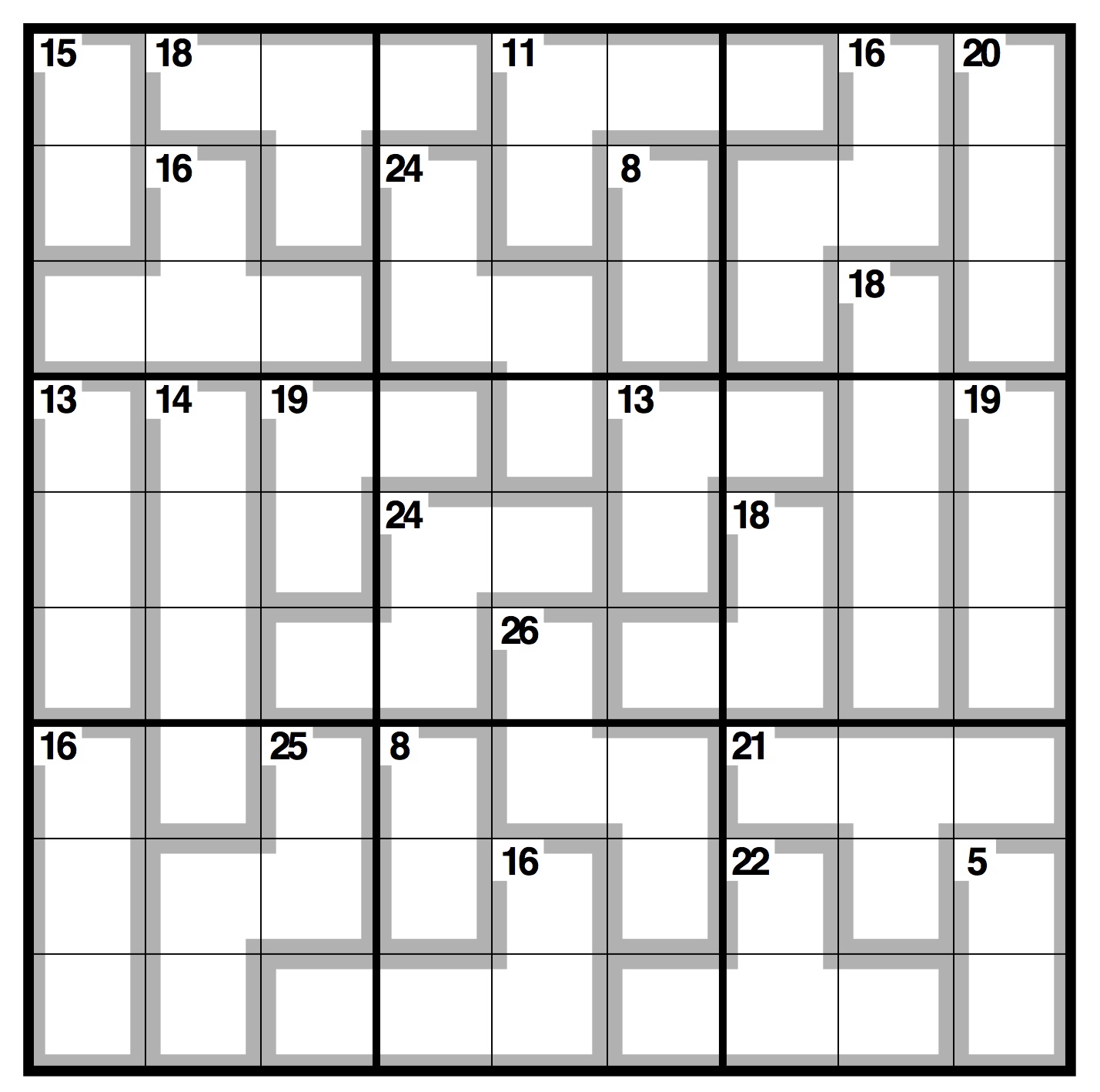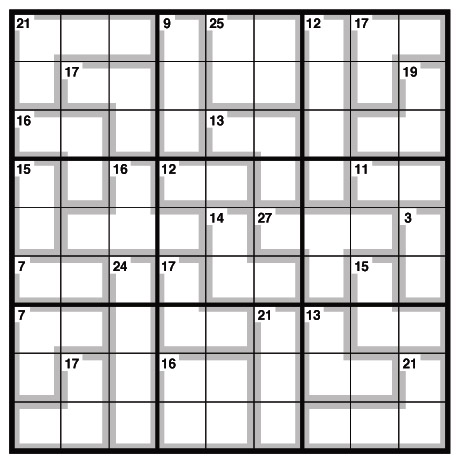

This is because these have the fewest possible combinations.

Generally the problem is best tackled starting from the extreme sums-cages with the largest or the smallest sums. Solving strategies Fewest possible combinations This revised rule stuck and the world standard is no duplicates within cages. But on September 19 the rule changed to “Within each dotted-line shape, a digit CANNOT be repeated if the normal row, column and 3x3 box rules are not broken” - causing even more confusion. On SeptemThe Times added a new ruling that “Within each dotted-line shape, a digit CAN be repeated if the normal row, column and 3x3 box rules are not broken”. Even though the vast majority of killer sudoku puzzles followed the rule anyway, English-speaking solvers were confused about appropriate solving strategies given the ambiguity. However, when The Times first introduced the killer sudoku on 31 August 2005, the newspaper did not make this rule explicit. In 'Killer X', an additional rule is that each of the long diagonals contains each number once.īy convention in Japan, killer sudoku cages do not include duplicate numbers. (This is the standard rule for killer sudokus, and implies that no cage can include more than 9 cells.) No number appears more than once in a cage.The sum of all numbers in a cage must match the small number printed in its corner.Each row, column, and nonet contains each number exactly once.The objective is to fill the grid with numbers from 1 to 9 in a way that the following conditions are met: House Any nonrepeating set of 9 cells: can be used as a general term for "row, column, or nonet" (or, in Killer X variants, "long diagonal") Rules Terminology Cell A single square that contains one number in the grid Row A horizontal line of 9 cells Column A vertical line of 9 cells Nonet A 3×3 grid of cells, as outlined by the bolder lines in the diagram above also called a box Cage The grouping of cells denoted by a dotted line or by individual colours. Other puzzle-makers may produce entirely asymmetrical puzzles. This is a matter of aesthetics, though, rather than obligatory: many Japanese puzzle-makers will make small deviations from perfect symmetry for the sake of improving the puzzle. Traditionally, as with regular sudoku puzzles, the grid layout is symmetrical around a diagonal, horizontal or vertical axis, or a quarter or half turn about the centre. Killer sudoku puzzles were already an established variant of sudoku in Japan by the mid 1990s, where they were known as "samunamupure." The name stemmed from a Japanized form of the English words "sum number place." Killer sudokus were introduced to most of the English-speaking world by The Times in 2005. 5.4 Initial analysis of the sample problem.5.3 Consistent numbers within combinations.


 0 kommentar(er)
0 kommentar(er)
